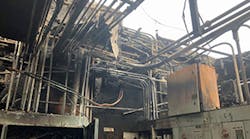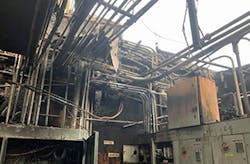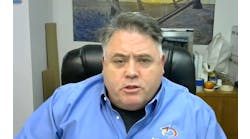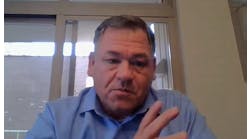Press fire is no match for teamwork and PlantPAx software
The aftermath of a forming press fire at Idaho-based Plummer Forest Products presented a grim picture, but with help from all of its employees, two system integrators and PlantPAx DCS, the particle board manufacturer was rebuilt and shipping product again in just three months.
What's the true value of flexible, modular, easily transportable distributed control system (DCS) software? Oh sure, it might streamline the average migration project, but what's it worth if it can help a manufacturer rebuild from a devastating fire, and get a major production line up and running two or three times faster than would've been possible without that software? What's the price of a gain that huge? Priceless might be a good word.
Well, that's just the scenario that went down on a press and forming line at Plummer Forest Products in Post Falls, Idaho, in March 2019, when a bearing failed on an exhaust fan, dropping sparks on the hot stacker and loader in-feed equipment. This triggered several small explosions, and then a large explosion and fire, which severely damaged the production line, gutted its operations booth and controls, and burned a hole through the roof of the building.
The plant was quickly evacuated as the fire spread, and thankfully no one was injured. However, as is the case with most fires, there was even more damage from the water used to put it out. The facility's 200 sprinkler heads ran for five hours, and water damaged its motor control centers (MCCs), primary controller rack, and remote systems consoles that were left with internal components floating in water.
Regroup, rebuild, rewire
With the company and its employees and their 70 families depending on a quick return to production, Plummer and its two system integrators, Advanced Electrical Technologies (AET) and Global Process Automation (GPA), quickly set to work, along with everyone else at the company. The team presented their story, "Devastating fire means rapid rebuild with Plant PAx DCS in record time" this week in the Process Solutions User Group conference track during Automation Fair At Home.
Together, they reported going from starting to rebuild to sending identical finished product out the door in just three months. The rebuild included the plant's electrical systems, and the PlantPAx DCS from Rockwell Automation made it possible for their recovery to happen so quickly. The rebuild and electrical work started in June, one-shift production resumed in the first week of September, and the plant was back up to full, 24/7 production in November 2019.
"Our job was to keep the consoles as close as possible to what they were before, so they'd be familiar to the operators, let them go back to work, pick up where they left off, and resume production as fast as possible. We salvaged, rebuilt and repainted the consoles, and added PlantPAx, too," said Adam Hamer, automation manager at AET. "One capability that helped right away was the Integrated Architecture Builder (IAB) software tool in PlantPAx, which integrated with Plummer's existing system, and let us rebuild its network topology much faster."
IAB was also useful because, while plenty of fire-damaged wire had to be replaced, AET and GPA were able to reuse a significant amount of in-place cables. "We lived close to our scrum whiteboard and P&ID drawings for quite awhile, but we also found that we didn't have to replace some legacy stuff, such as the Profibus modules that talk to the Siemens I/O points. We were able to use pre-wired 1492-IFM modules and cables, which helped us wire the controller cabinets quickly."
Recreating the look
Robert Anderson, account manager at Plummer, reported that one task in reconstructing the press line's human-machine interface (HMI) system was converting scripts in the previously used Wonderware software to FactoryTalk View SE in PlantPAx. It also migrated from its former Honeywell Measurex recipe management system to PlantPAx's RecipePro.
"We were able to use the PlantPAx add-on instructions and available faceplates to give us a common look and feel. We were also able to cut and paste instructions, which let us set up I/O and motors faster, and use FactoryTalk View SE to quickly duplicate our previous HMI graphics," said Anderson. "We also got immediate feedback from our operators about what was working or what needed to be fixed, and all of this input had a huge impact on our ability to recover so quickly. In fact, after startup and just three runs, we were producing sellable product."
Anderson added that the 1,625-ton forming press typically produces 25-layer sheets, with about half going to retailers for sale as underlayment products, and half going to industrial manufacturers after receiving additional laminations. "We also had get the line's motors and servos up and running again, and integrated them and two PowerFlex 700S drives with the PlantPAx DCS. All together, we had 2,500 to 3,000 I/O," added Anderson.
"We weren't glad about the fire, of course, but we were happy with how everyone pitched in, and that we worked so well together so well with AET and GPA,” Anderson said. “Everyone understood and worked to meet our fast timeline. PlantPAx worked great, too—we're planning to use it in other operations across our plant to help optimize the products we make every day."
The editors of Control, Control Design and Smart Industry are providing coverage of Automation Fair At Home, bringing you breaking news, innovations and insights from the virtual event. Once Automation Fair At Home is over, the editors will put together an event report featuring the top news. Pre-order your copy today.







